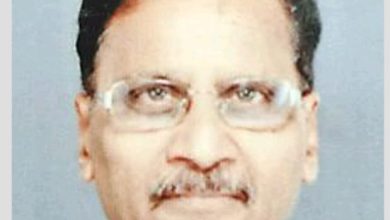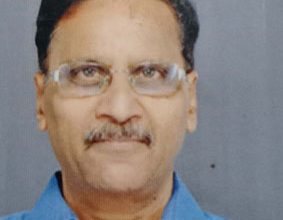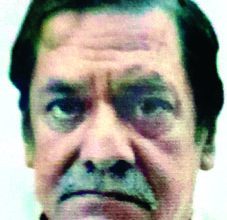Cholas are back with a bang!

Vasisht.M.C
In the ancient and medieval history of India, we come across many dynasties, such as the Mauryas, Guptas, Sultanate, Mughals, etc. These are known as pan-Indian political powers that had control over various territories of the Indian subcontinent. There were also important political powers located in the southern region of the Vindhya mountains, such as the Cholas and the Vijayanagara. However, people from North India are not very familiar with the history of the Cholas or the Vijayanagara.
The movies Ponniyin Selvan -1 and Ponniyin Selvan -2 provide an opportunity for people in India to re-learn the history of the mighty Cholas. Both movies are based on Murthy’s popular novel with the same title, which is undoubtedly the most popular literary piece in Tamil.
Two Chola dynasties existed in the history of Tamil Nadu/South India. They were the Cholas of the early historic period (BC 300-400 AD) and the later Cholas (850-1278 CE). There is no evidence to link the early Cholas with the later Cholas. The headquarters of the early Cholas were at Uraiyur, and the headquarters of the later Cholas were at Thanjavur, both in central Tamil Nadu and on the banks of the river Kaveri. The early Cholas are generally referred to as ancient Cholas, and the later Cholas as medieval Cholas.
Medieval Cholas were actually the feudatories of the Pallavas. In around 850 AD, they defeated the Pallavas and captured power. During the period of medieval Cholas, a mighty Chola empire was created. Two Chola kings were largely responsible for the creation of a Chola empire that crossed the seas. These two Chola kings were Rajaraja Chola (985-1014 A.D) and Rajendra Chola (1014-1044 A.D). The Cholas were the first Indian political power to cross the seas and earn military victories in Sri Lanka, China, Indonesia, and the Maldives.
Rajendra Chola crossed the Vindhya mountains and conquered the north Indian regions and adopted the title Gangaikonda Chola, meaning the one who conquered the Ganges. In order to commemorate his victories in North India, he built a new capital city known as Gangaikonda Cholapuram. A new temple was also constructed at his capital city in the line of Brihadishvara temple at Thanjavur.
The movies PS-1 and PS-2 are set in the background of later Cholas, in fact in the background of Chola history from 955 CE to 985 CE, the most crucial and complicated phase of medieval Chola history, the period from Parantaka Chola I to the accession of the throne by Rajaraja Chola I in 985 AD.
In 955 CE, Parantaka Chola I died, and his second son, Gandaradhitya Chola, came to power. But his reign lasted for a short period. After Gandaradhitya Chola, the next legal heir to the Chola kingdom was his son Uttama Chola. At that time, Uttama Chola was a minor, and the throne went to Arijanya Chola, the brother of Gandaradhitya Chola. After the death of Arijanya Chola (958 AD), his son Parantaka Chola II, also known as Sundara Chola, came to power in 958 AD. The movie PS-1 and PS-2 are set in the background of this confused period of Chola history.
The period of the Cholas, one of the most powerful dynasties in South India, is the subject of two movies, PS-1 and PS-2, based on the historical novel “Ponniyin Selvan” by Kalki Krishnamurthy. The movies are set during the last days of Sundara Chola, and focus on the struggle for power between various contenders, including Veera Pandya, the defeated Pandya king; Uttama Chola, Sundara Chola’s ambitious custodian of the Chola treasury and commander of Thanjavur fort; and the chiefs of the Chola kingdom. The main characters are Adithya Karikalan, the elder son of Sundara Chola; Kundavai, Sundara Chola’s daughter; Arulmozhi Varman (Ponniyin Selvan), the younger son of Sundara Chola who later became known as Raja Raja Chola; and Vanthiyathevan, commander of the Chola army.
In 969 A.D, Aditya Karikala Chola died, leaving the throne to his brother Ponniyin Selvan. However, Ponniyin Selvan abandoned the throne, and it passed to Uttama Chola, also known as Madhurantakan. While the movies focus on male characters, they also have powerful women characters in the form of Nandhini and Kundavai, showing that women played a significant role in the power struggle.
The Chola period was also marked by the presence of Vaishnava saints known as Alvars and Shaiva saints known as Nayanars. The movies feature a character of an Alvar saint who even involved in political issues. Additionally, the movies highlight the historic ties between the Cholas and Sri Lanka.
Overall, the movies highlight the power struggle that existed in the Chola kingdom. Some of the characters are fictitious, but both movies successfully highlight the political and military history of the Cholas. Thus, these movies strengthen the concept of history for national integration. The Cholas are back with a bang, reminding us of their legacy and impact on South Indian history.






